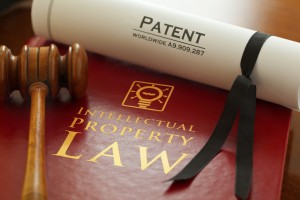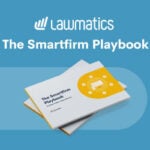The Billions Boost
This verdict shows that juries are prepared to award big verdicts even when the current patent holder is a nonpracticing entity.
 Billion-dollar verdicts in patent cases are rare. Two-billion-dollar verdicts — like the one secured by a Fortress-backed entity called VLSI against Intel in the Western District of Texas — are rarer still. When they happen, however, they call for immediate commentary. Even though there is apparently no record of a $1 billion-plus verdict getting sustained on appeal in toto or otherwise ending up in a settlement for less than the awarded verdict. Still, as I wrote in a column about the $1 billion-plus Caltech v. Apple/Broadcom verdict last February, a billion-dollar verdict in a patent case is a patent event that will “really command broad media attention.” Indeed, the VLSI/Intel verdict was quickly reported out by a variety of media outlets, from the usual IP-focused media to Bloomberg to the Washington Post.
Billion-dollar verdicts in patent cases are rare. Two-billion-dollar verdicts — like the one secured by a Fortress-backed entity called VLSI against Intel in the Western District of Texas — are rarer still. When they happen, however, they call for immediate commentary. Even though there is apparently no record of a $1 billion-plus verdict getting sustained on appeal in toto or otherwise ending up in a settlement for less than the awarded verdict. Still, as I wrote in a column about the $1 billion-plus Caltech v. Apple/Broadcom verdict last February, a billion-dollar verdict in a patent case is a patent event that will “really command broad media attention.” Indeed, the VLSI/Intel verdict was quickly reported out by a variety of media outlets, from the usual IP-focused media to Bloomberg to the Washington Post.
All the attention on the value of patents — at least in Texas courtrooms — is typically hailed as a welcome change in the pro-patent community from the mainstream media’s allegedly antipatent bias. Indeed, huge verdicts are perhaps the best opportunity for the pro-patent crowd to celebrate. As I wrote when discussing the Caltech verdict, big verdicts “give a boost to the entire patent ecosystem, if only because they remind everyone that certain patents can actually be considered very valuable, at least by a jury.” And there is no doubt that the latest verdict will also give a form of boost to the patent ecosystem, at least for the next year and a half or so until the appeal is decided (assuming there is not some kind of expedited appeal process.) At minimum, enthusiasm for getting to trial against well-heeled defendants will be high.
In the short term, my sense is that there are at least three immediate takeaways that arise out of the awarding of this megaverdict. First, I think this verdict will embolden nonpracticing entities that hold patents from pedigreed sources to take more cases to trial if their settlement demands are not met. Second, litigation funders interested in investing in patent cases will benefit from this verdict in a variety of ways. Third, patentee demand for — and defendant desperation to avoid — moving forward in the Western District of Texas will reach feverish levels. Let’s take each point in turn.

InterAction+ Brings Power Of CRM Software To Law Firms Of All Sizes
To start, this verdict shows that juries are prepared to award big verdicts even when the current patent holder is a nonpracticing entity. Moreover, they are prepared to do so even when the defense does a good job of painting the asserted patents as “zombie patents” held by a nonpracticing entity, as reporting from the trial by observers confirmed that Intel convincingly argued. In my view, the main counterbalance to that argument is that the jury will often convince themselves that the patents must be valuable if the nonpracticing entity purchased them in the first place, especially if those patents come from a pedigreed source such as another large technology company. Add in that the patentee was obviously prepared to engage in a long and expensive litigation process, as well as the huge damages demand being made based on the patents — and it all contributes to an underlying sense by the jury that these must be unusually valuable assets. Combating that is a hard thing for a defendant to do, as Intel’s game, but unavailing, attempt demonstrates.
Next, even if you don’t consider Fortress a typical litigation funder, there is no doubt that litigation funders benefit in a number of ways from these $1-billion-plus headline verdicts. For one, large verdicts and the possibility of a corresponding windfall return help attract investor interest into parking money with litigation funders. Likewise, demand for litigation funding to take cases to trial would also be expected to rise, giving funders a broader and deeper pool of investment opportunities to diligence.
Moreover, big verdicts like this one encourage parties that have cases already funded to persevere toward trial rather than settle. Which means that they use more of the funder’s capital and thereby increase the funder’s potential return. Conversely, defendants in funded cases — and it is now more than ever super-important for defendants to determine as EARLY AS POSSIBLE in a case whether the patentee has access to the resources to get to trial — come under increased pressure to settle, which will allow funders to get some of their funded cases resolved earlier. On all fronts, this verdict should be a boon for funders.
Finally, it is already well-known that the Western District of Texas is already a hotbed for venue-related litigation, with plaintiffs desperate to stay and defendants equally desperate to say goodbye for greener pastures. As I couched it a few weeks ago, the Federal Circuit has already called for Judge Albright to make disposition of transfer motions a “top priority.” There is no doubt the VLSI/Intel verdict will increase scrutiny on his handling of transfer motions, as all sides now have headline-grabbing proof of the potential consequences for a patent defendant getting in front of a West Texas jury. At the same time, it is also clear that those consequences will continue driving filing of patent cases in that court, with even more frenzied attempts by defendants to avoid having those cases stay there. Just another example of how the billions boost will play out in patent cases going forward.
Sponsored

LawPay Pro Offers Upgraded Time And Billing Essentials

How to Achieve Quicker, More Valuable Case Settlements with Minimal Effort: A Guide for Personal Injury Lawyers

How Generative AI Is Disrupting Law Firm Billing Practices

The Smartfirm Playbook - Thriving In Today’s Legal Landscape
Please feel free to send comments or questions to me at gkroub@kskiplaw.com or via Twitter: @gkroub. Any topic suggestions or thoughts are most welcome.
Gaston Kroub lives in Brooklyn and is a founding partner of Kroub, Silbersher & Kolmykov PLLC, an intellectual property litigation boutique, and Markman Advisors LLC, a leading consultancy on patent issues for the investment community. Gaston’s practice focuses on intellectual property litigation and related counseling, with a strong focus on patent matters. You can reach him at gkroub@kskiplaw.com or follow him on Twitter: @gkroub.
Sponsored

InterAction+ Brings Power Of CRM Software To Law Firms Of All Sizes








